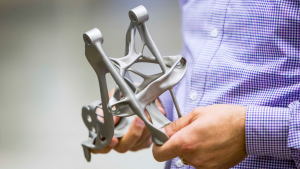Generative design is the future of engineering, architecture, and property development. Learn how the process can revolutionise these industries.
By now, it’s clear that technology has redefined the way we do most things. Manual work is increasingly getting replaced by automated processes. And with this, people can focus instead on the more meaningful tasks.
Modern solutions are key to success in property development, particularly with respect to the design aspect. You can stay efficient and competitive through the use of the most advanced platforms.
In recent times, generative design has emerged as a trend that promises to remake many industries. It presents a great opportunity that engineers, architects, and designers might want to take advantage of.
You’ll find, in this article, a description of the impact that generative design is going to have on engineering and manufacturing. Before that, however, it’d make sense to learn what this new technology is in the first place.
What Is Generative Design?
Design has always required manual labour.
An engineer consults product specifications to come up with multiple potential designs. They make use of drawings, CAD designs, and similar tools to envision the designs.
Now, imagine if you could just tell a program what you need and it would then proceed to generate the most suitable designs.
That’s what generative design software does at a glance.
Generative Design is a process of design exploration. Through generative design software, designers or engineers input their design goals. This includes parameters like materials, performance requirements, spatial needs, cost constraints, and manufacturing methods.
Using artificial intelligence, the software allows you to input the size, materials, strength, and other variables. The software can automatically create as many as thousands of designs that meet the input requirements.
The program is smart enough to explore manufacturing options and criteria that might have escaped your attention. This is part of how generative design can make the design process more efficient, and significantly more so if you consider the iterative capability.
At the same time, it can also unlock many opportunities.
However, it’s important to distinguish this technology from other methods. In particular, those that feature similar elements but are much more restricted in terms of applications. Some examples include lattice optimisation, topology optimisation, parametric design, and more.
None of the above technologies can create entirely new designs for you. Rather, they only improve particular aspects of existing designs. In contrast, generative design offers a wide range of possibilities and acts as an extension of the designer’s abilities.
Generative design can take manufacturability into account, which is not the case with most optimisation techniques. A generative design program can drastically reduce the need to go back and forth between testing and redesigning.
Because of this ability, the technology is applicable in more than just design. Its use extends to some of the key aspects of production.
It’s not for lack of reason that many predict generative design will become an indispensable tool in engineering and manufacturing. Let’s have a look at how the design process can contribute to the two disciplines.
1. Material Reduction in Manufacturing
Proactive companies are already reaping the many benefits of generative design. And one of the most important is a significant reduction in materials used. Depending on the material, this can result in significant direct savings.
Even if the material does change, using less amounts of any material will always cost less than using more.
One of the companies that have adopted generative design is Airbus. They used it to redesign the interior components of the A320 aircraft.
The new designs required much less materials and the redesigned partition now weighs 45% less. Besides the costs savings for both manufacturer and customers, the lower weight also reduces jet fuel consumption and, with it, the carbon footprint.
Similarly, materials handling company Claudius Peters will be saving thousands of euros on every clinker cooler produced with it.
Of course, the reduction in materials used impacts more than company financials.
We’ve mentioned the lower fuel consumption of lighter aircrafts, but using less materials on its own already has a highly positive effect on the environment. The Earth’s resources are already limited, but their productions require energy consumption and carbon emissions.
For example, Airbus expects to lower carbon emissions by 465,000 tons annually with the new parts. This is the same as taking 96,000 passenger cars off the roads.
By leveraging generative design software, companies are working towards long-term sustainability. They can help protect the environment and provide better compliance with the ever-stricter environmental regulations.
2. Part Consolidation
Generative design also allows for consolidation, in the sense that existing multiple-part assemblies can potentially become single-part products. The result would be a more efficient manufacturing process.
In addition, part consolidation facilitates the better use of warehouses, as well as a more streamlined supply chain.
A great example is evident in what General Motors did with its seat brackets. With the aid of generative design, GM managed to turn an eight-part bracket into a single-part bracket. Happy with the platform’s potential, GM has started to apply it to other processes as well.
3. Process Optimisation
Besides manufacturing, generative design can make a great difference in the process of property development. It simplifies many of the requisite operations in drastically reducing the design-build time.
Van Wijnen, the Netherlands’ leading design-build company, has seen massive improvements in processes with the help of generative design. With it, the company’s time to market went down to three weeks from a previous high of six months.
How was that possible?
First and foremost, the company digitised 2D drawings using 3D modelling. This allowed them to aggregate the designs that engineers and architects came up with. The designs are now digital models the company can use to identify discrepancies.
It then developed a modular housing concept with hundreds of unique components. These are each configurable in numerous ways for a wide array of options.
Furthermore, the company is now able to standardise all modules and components by their unique codes and prices. Of course, this greatly benefits new clients who are looking to build a house.
Van Wijnen ended up with a simpler yet more capable process, thanks to its generative design software. They are now able to serve more clients and pass on the cost savings.
4. Custom-Made Retail Products
The retail industry is always under a lot of pressure.
Retailers must keep up with changes in customer needs and habits just to survive. Those who wish to do better than survival would have to constantly find new ways to meet customer needs and to do so better than the competitors.
From great customer care to delivering a good experience, retailers can attract and retain customers with a number of tactics. However, the ability to offer custom and personalised products is the key trend that retailers must follow.
Creating such products can be costly and time-consuming in the traditional assembly line approach.
But not with generative design.
Just look at Adidas. The company’s goal is to deliver perfect shoes to all buyers. Aside from the customary size and fit, the shoes would also have to conform to the user’s arch, knee limitations, and running style.
To make this happen, Adidas turned to the power of 3D printing. The company is already mass-producing customised 3D-printed midsoles. It plans to keep going down this road until it can serve up personalised products effortlessly.
As global creative director James Carnes puts it:
‘We have a really aggressive plan to scale this. We are scaling a production. The plan will put us as the (world’s) biggest producer of 3D-printed products.’
A Wealth of Opportunities
You may have to go back awhile to find a new technology as impactful as generative design software. It has the power to streamline the design and manufacturing of any products.
Besides, the promised reduction in materials used and related costs can be outstanding. Leveraging generative design can benefit the users, their clients, and the environment as a whole. Since the concept is relatively new, you can be an early adopter and gain an advantage over your competitors. We can also expect major improvements in the future.
And if you’re looking for a tool that uses generative design to the fullest, Archistar can be an excellent choice.
Among the many useful features, the 3D building generator can create stunning designs in short order. Of course, the platform is smart enough to take all regulations into account to come up with fully-compliant designs.
Get started for free: [https://www.archistar.ai/]


